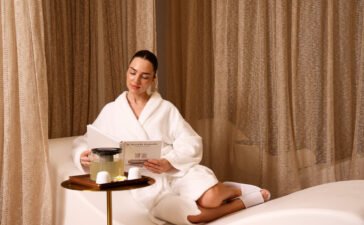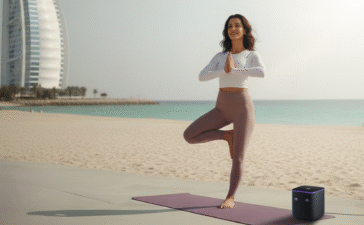By: Ana Gomez Arinero, Clinical and Forensic Psychologist, Adult Specialist at Sage Clinics
A mental hygiene routine is no less important than physical hygiene. It’s just less visible, and often more neglected. A mental hygiene routine may include self-reflection and self-observation, which means paying attention to our thoughts with some distance, curiosity, openness, and acceptance. Practices like Mindfulness, or specifically for anxiety, Mindfulness-Based Stress Reduction (MBSR), help this process.

For many of us, we spend half of our waking hours lost in our thoughts, in repetitive thoughts, ruminations about the past or future, self-criticism, or worrisome content, not solving or concluding anything but aggravating our emotional tensions. For some, this thinking is done on autopilot. We don’t even know we are doing it. It has been proven that this mind-wandering correlates with lower levels of emotional satisfaction. Sometimes the experience is so distressing that we escape from our thoughts by being constantly busy.
Through mindfulness practice, we learn to be with our experience and our thoughts without avoiding them, which helps us gain control of the experience.
Paying attention to our thoughts mindfully and consistently brings us many benefits. It helps us be less reactive to experiences that cause us pain or emotional tension, improves our cognitive flexibility and adaptability to challenges, and gives us greater emotional balance and mental wellness.
Mindfulness is a practice based on intentional attention and orientation toward the present moment characterized by curiosity, openness, and acceptance.
Here are some exercises to help you manage autopilot states:
- Body Scan: Take a moment to lie down or sit comfortably. Bring your attention to different parts of your body, starting from your toes and moving upward. Notice any sensations like tingling, warmth, or tension, without judgment. This practice helps you connect with your body and brings a sense of calm.
- Mindful Breathing: Find a quiet space to sit comfortably. Close your eyes and focus on your breath. The sensation of air entering and leaving your nostrils or the rise and fall of your chest. When your mind wanders, bring your attention back to your breath. It’s normal for thoughts to arise; the key is to return to the present moment each time.
- Mindful Movement: Engage in slow, deliberate movements like stretching. Pay attention to how your body feels during each movement. If any pose feels uncomfortable, feel free to skip it. The goal is to move with awareness, not to push your limits.
- Mindful Tasks: Choose a routine activity, like walking, eating, or washing dishes, and perform it with full attention. Notice the sensations, smells, textures, and sounds involved. For example, when eating, savour each bite, noticing the flavours and textures.
We encourage you to practice consistently. A few minutes per day is better than no practice, and it will help you create a routine around it and progressively increase the duration of the practice as you find more clarity, inner peace, and a feeling of being attuned to the present moment.
You can find out more about Ana Gomez Arinero and the team at Sage Clinics: here. For more information about the services Sage Clinics offers or to book an appointment please contact +971 4 575 5684, at appointments@sage-clinics.com or through the chat function in the bottom right corner of the website.








